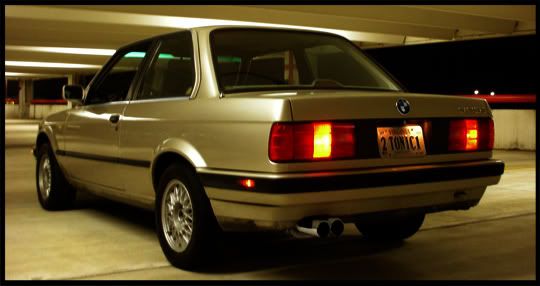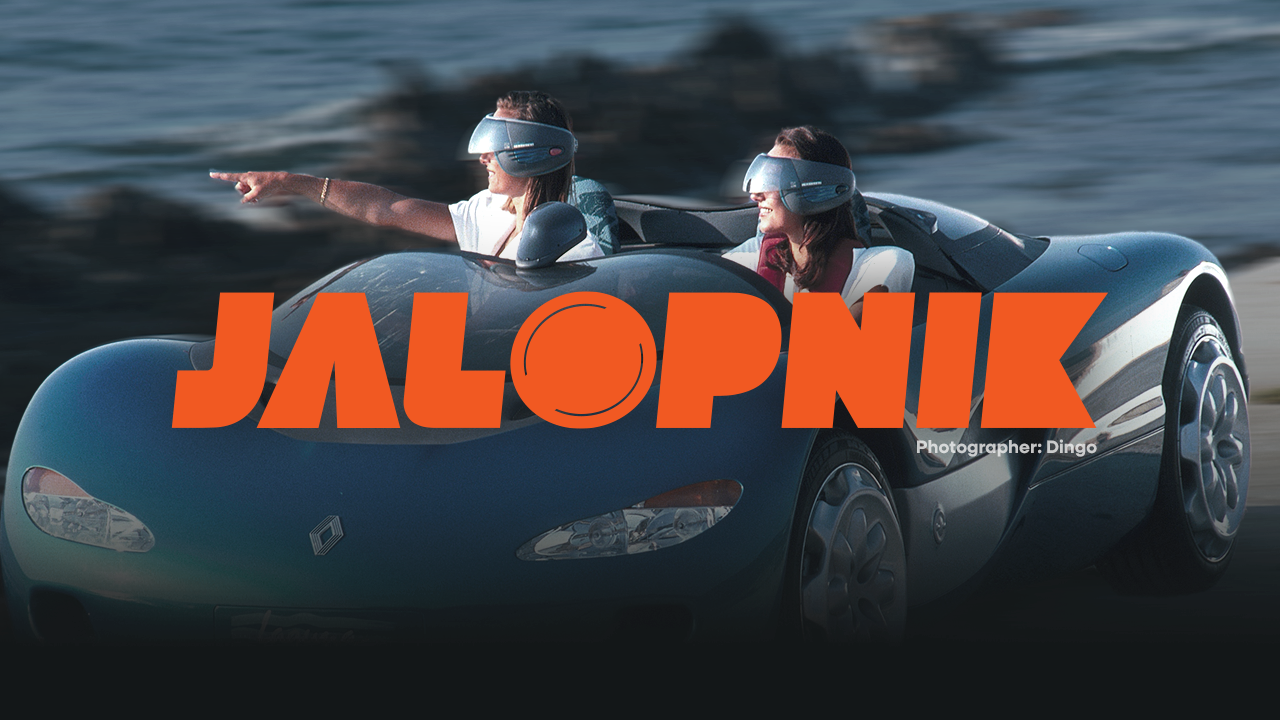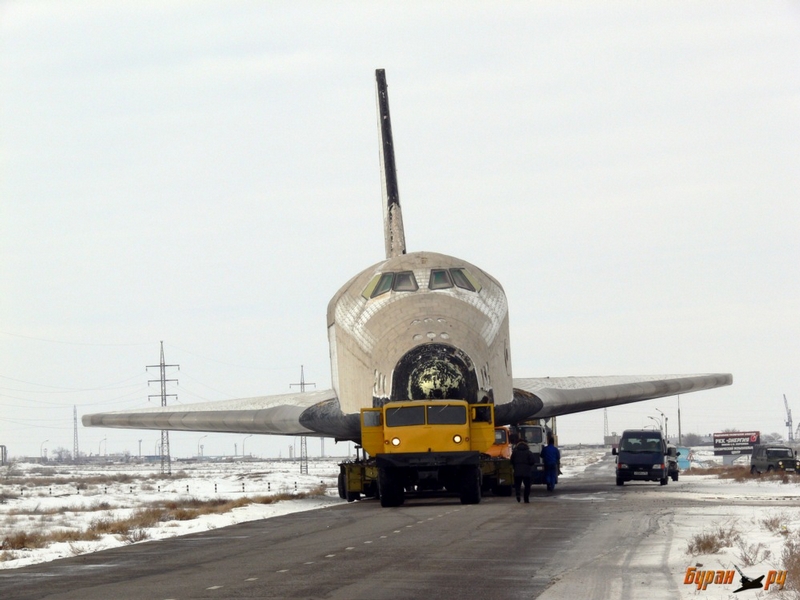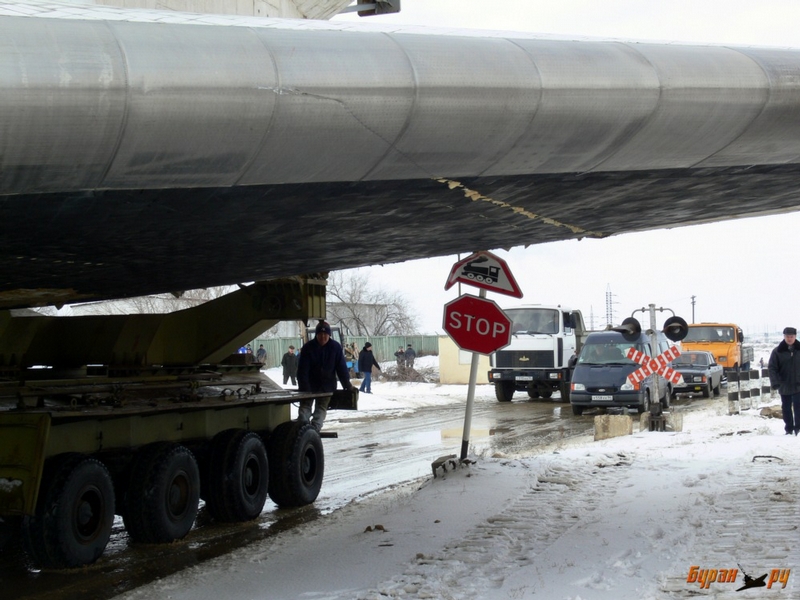Those are great shots man, very impressive!
The last of the Shuttle Launches.....
Collapse
X
-
 Space Shuttle Columbia lifts off from Kennedy Space Center, on April 12, 1981. Commander John Young and pilot Robert Crippen were onboard STS-1, the first orbital flight of the Space Shuttle program. (Reuters/NASA/KSC)
Space Shuttle Columbia lifts off from Kennedy Space Center, on April 12, 1981. Commander John Young and pilot Robert Crippen were onboard STS-1, the first orbital flight of the Space Shuttle program. (Reuters/NASA/KSC) 
 2
2
While on a visit to watch the launch of Apollo 16 on April 15, 1972, Russian Poet Yevgeny Yevtushenko (left) listens as Kennedy Space Center Director Dr. Kurt H. Debus explains the space shuttle program. In the right foreground is a model of one the proposed Space Shuttle ship and rocket concepts. (AP Photo) #
 3
3
A scale model of the proposed Space Shuttle wing configuration. Photo taken on March 28, 1975. (NASA) #
 4
4
This November 6, 1975 photo shows a scale model of the Space Shuttle attached to a 747 carrier, inside NASA's 7 x 10 wind tunnel. (NASA) #
 5
5
Part of the crew of the television series Star Trek attend the first showing of America's first Space Shuttle, named Enterprise, in Palmdale, California, on September 17, 1976. From left are Leonard Nimoy, George Takei, DeForest Kelly and James Doohan. (AP Photo) #
 6
6
The inside view of a liquid hydrogen tank designed for the Space Shuttle external tank, viewed on February 1, 1977. At 154 feet long and more than 27 feet in diameter, the external tank is the largest component of the Space Shuttle, the structural backbone of the entire Shuttle system, and is the only part of the vehicle that is not reusable. (NASA) #
 7
7
A technician works on sensors installed in the back end of a scale model of the Space Shuttle in NASA's 10X10 foot wind tunnel, on February 15, 1977. (NASA) #
 8
8
At NASA's Kennedy Space Center in Florida, this space shuttle mock-up, dubbed Pathfinder, is attached to the Mate-Demate Device for at fit-check on October 19, 1978. The mock-up, constructed at NASA's Marshall Space Flight Center in Huntsville, Alabama, possessed the general dimensions, weight and balance of a real space shuttle. (NASA) #
 9
9
The Space Shuttle prototype Enterprise flies free after being released from NASA's 747 Shuttle Carrier Aircraft over Rogers Dry Lakebed during the second of five free flights carried out at the Dryden Flight Research Center, Edwards, California, on January 1, 1977. A tail cone over the main engine area of Enterprise smoothed out turbulent air flow during flight. It was removed on the two last free flights to accurately check approach and landing characteristics. (NASA) #
 10
10
Space Shuttle Columbia arrives at launch complex 39A in preparation for mission STS-1 at Kennedy Space Center, on December 29, 1980. (Reuters/NASA/KSC) #
 11
11
Looking aft toward the cargo bay of NASA's Space Shuttle Orbiter 102 vehicle, Columbia, Astronauts John Young (left) and Robert Crippen preview some of the intravehicular activity expected to take place during the orbiter's flight test, at Kennedy Space Center October 10, 1980. (Reuters/NASA/KSC) #
 12
12
Flight director Charles R. Lewis (left) studies a chart display on his console's monitor in the mission operations control room (MOCR) in the Johnson Space Center's Mission Control Center, in April of 1981. (NASA) #
 13
13
The two solid rocket boosters are jettisoned from the climbing space shuttle Columbia as a successful launch phase continues for NASA's first manned space mission since 1975, on April 12, 1981. Astronauts John W. Young and Robert L. Crippen are aboard Columbia. (NASA) #
 14
14
The Space Shuttle Columbia on Rogers Dry lakebed at Edwards AFB after landing to complete its first orbital mission on April 14, 1981. Technicians towed the Shuttle back to the NASA Dryden Flight Research Center for post-flight processing and preparation for a return ferry flight atop a modified 747 to Kennedy Space Center in Florida. (NASA/JSC) #
 15
15
The Space Shuttle Columbia is carried atop a NASA 747 at the Edwards Air Force Base, California, on November 25, 1981. (AP Photo/Lennox McLendon) #
 16
16
Nighttime launch of the Space Shuttle Columbia, on the twenty-fourth mission of NASA's Space Shuttle program, on January 12, 1986. (NASA) #
 17
17
Astronaut Sally Ride, mission specialist on STS-7, monitors control panels from the pilot's chair on the Flight Deck of the Space Shuttle Challenger in this NASA handout photo dated June 25, 1983. Floating in front of her is a flight procedures notebook. (Reuters/NASA) #
 18
18
The Space Shuttle Enterprise passes through a hillside that has been cut to clear its wingspan, at Vandenberg Air Force Base, in California, on February 1, 1985. The orbiter is en route to Space Launch Complex Six aboard its specially-designed 76-wheel transporter. (Tech. Sgt. Bill Thompson/USAF) #
 19
19
High angle overall view of Space Shuttle Enterprise in launch position on the Space Launch Complex (SLC) #6, during the ready-to-launch checks to verify launch procedures at Vandenberg Air Force Base, on February 1, 1985. (Tech. Sgt. Bill Thompson/USAF) #
 20
20
The space shuttle orbiter Discovery lands on Edwards Air Force Base in California, following completion of the 26th Space Transportation System mission. (Tech. Sgt. Mike Haggerty/USAF) #
 21
21
Christa McAuliffe tries out the commander's seat on the flight deck of a shuttle simulator at the Johnson Space Center in Houston, Texas, on September 13, 1985. McAuliffe was scheduled for a space flight on the Space Shuttle Challenger in January, 1986. (AP Photo) #
 22
22
Ice forms on equipment on launch pad 39-B, on Jan. 27, 1986, at the Kennedy Space Center, Florida, before the ill-fated launch of the Space Shuttle Challenger. (AP Photo/NASA) #
 23
23
Spectators in the VIP area at the Kennedy Space Center, Florida, watch as the Space Shuttle Challenger lifts from Pad 39-B, on January 28, 1986. (AP Photo/Bruce Weaver) #
 24
24
The Space Shuttle Challenger explodes 73 seconds after liftoff from the Kennedy Space Center. The shuttle, carrying a crew of seven, including the first teacher in space, was destroyed, all aboard were killed. (NASA) #
 25
25
Spectators at the Kennedy Space Center in Cape Canaveral, Florida, react after they witnessed the explosion of the space shuttle Challenger on January 28, 1986. (AP Photo) #
 26
26
The Space Shuttle Columbia (left), slated for mission STS-35, is rolled past the Space Shuttle Atlantis on its way to Pad 39A. Atlantis, slated for mission STS-38, is parked in front of bay three of the Vehicle Assembly Building following its rollback from Pad 39A for repairs to the liquid hydrogen lines. (NASA) #
 27
27
A Florida Air National Guard F-15C Eagle aircraft assigned to the 125th Fighter Wing, flies a patrol mission as the Space Shuttle Endeavor launches from Cape Canaveral, Florida, on December 5, 2001. (Tsgt. Shaun Withers/USAF) #
 28
28
Fish-eye view of the Space Shuttle Atlantis as seen from the Russian Mir space station during the STS-71 mission on June 29, 1995. (NASA/JSC) #
 29
29
Cosmonaut Valeriy V. Polyakov, who boarded Russia's Mir space station on January 8, 1994, looks out Mir's window during rendezvous operations with the Space Shuttle Discovery. (NASA) #
 30
30
Mission Specialist Bruce McCandless II, is seen further away from the confines and safety of the Space Shuttle Challenger than any previous astronaut has ever been from an orbiter in this February 12, 1984 photo. (Reuters/NASA) #
 31
31
A modified Space Shuttle Main Engine is static fired at Marshall Space Flight Center's Technology Test Bed, in Huntsville, Alabama, on December 22, 1993. (NASA/MSFC) #
 32
32
Astronaut Joseph R. Tanner, STS-82 mission specialist, is backdropped against Earth's limb and a sunburst effect in this 35mm frame exposed by astronaut Gregory J. Harbaugh, his extravehicular activity (EVA) crew mate, on February 16, 1997. The two were making their second space walk and the fourth one of five for the STS-82 crew, in order to service the Hubble Space Telescope (HST). (NASA) #
 33
33
The fist two components of the International Space Station are joined together on December 6, 1998. The Russian-built FGB, also called Zarya, nears the Space Shuttle Endeavour and the U.S.-built Node 1, also called Unity (foreground). (NASA/JSC) #
 34
34
During the first Gulf War, in April of 1991, black smoke pours from burning oil wells in the Kuwaiti desert, seen from Earth orbit by an astronaut onboard the Space Shuttle Atlantis during mission STS-37. The Iraqi army set fire to the oil wells in the region as they withdrew from their occupation of that country. (NASA/Getty Images) #
 35
35
Space Shuttle Endeavour (STS-134) makes its final landing at the Shuttle Landing Facility (SLF) at Kennedy Space Center in Cape Canaveral, Florida, on June 1, 2011. (Reuters/NASA/Bill Ingalls) #
 36
36
Billows of smoke and steam infused with the fiery light from Space Shuttle Endeavour's launch on the STS-127 mission fill NASA Kennedy Space Center's Launch Pad 39A in July of 2009. (NASA) #
 37
37
Space shuttle external tank ET-118, which flew on the STS-115 mission in September 2006, was photographed by astronauts aboard the shuttle about 21 minutes after lift off. The photo was taken with a hand-held camera when the tank was about 75 miles above Earth, traveling at slightly more than 17,000 mph. (NASA) #
 38
38
The space shuttle twin solid rocket boosters separate from the orbiter and external tank at an altitude of approximately 24 miles. They descend on parachutes and land in the Atlantic Ocean off the Florida coast, where they are recovered by ships, returned to land, and refurbished for reuse. (NASA) #
 39
39
Though astronauts and cosmonauts often encounter striking scenes of Earth's limb, this very unique image, part of a series over Earth's colorful horizon, has the added feature of a silhouette of the space shuttle Endeavour. The image was photographed by an Expedition 22 crew member prior to STS-130 rendezvous and docking operations with the International Space Station on February 9, 2010. The orange layer is the troposphere, where all of the weather and clouds which we typically watch and experience are generated and contained. This orange layer gives way to the whitish Stratosphere and then into the Mesosphere. (NASA) #
 40
40
NASA space shuttle Columbia hitched a ride on a special 747 carrier aircraft for the flight from Palmdale, California, to Kennedy Space Center, Florida, on March 1, 2001. #
 41
41
The high temperatures which were to be encountered by the Space Shuttle were simulated in the tunnels at Langley in this 1975 test of the thermal insulation materials which were used on the orbiter. (NASA) #
 42
42
While fire-rescue personnel prepare evacuation litters, two stand-in "astronauts" prepare to use an exit slide from a Shuttle mockup during a rescue training exercise in Palmdale, California, on April 16, 2005. (NASA / Tony Landis) #
 43
43
The Space Shuttle Challenger moves through the fog on its way down the crawler way en route to Launch Pad 39A at Kennedy Space Center in this NASA handout photo dated November 30, 1982. (Reuters/NASA) #
 44
44
Donnie McBurney (left) and Chris Welch, both of Merrit Island, Florida, watch from atop their body boards as the space shuttle Discovery lifts off from Cape Canaveral, October 29, on mission STS-95. John Glenn returned to space aboard Discovery for the first time in 36 years. (Reuters) #
 45
45
After its second servicing mission, the Hubble Space Telescope begins its separation from the Space Shuttle Discovery on February 19, 1997. (NASA) #
 46
46
This photo provided by NASA taken from the ground using a telescope with a solar filter shows the NASA space shuttle Atlantis in silhouette during solar transit, Tuesday, May 12, 2009, from Florida. (AP Photo/Thierry Legault, NASA) #
 47
47
In this image from a NASA video, the silhouette of Space Shuttle Columbia Commander for mission STS-80, Kenneth Cockrall, is visible against the front windows of the Space Shuttle during reentry on December 7, 1996. The orange glow in the window is from ionizing atoms in the atmosphere caused by the friction of air against the Shuttle's surface during reentry. (NASA/Getty Images) #
 48
48
Space Shuttle Discovery lands in the Mojave Desert on September 11, 2009 at the NASA Dryden Flight Research Center on Edwards Air Force Base near Mojave, California. (David McNew/Getty Images) #
 49
49
The Space Shuttle Endeavour rests atop NASA's Shuttle Carrier Aircraft in the Mate-Demate Device (MDD) at the Ames-Dryden Flight Research Facility, Edwards, California, shortly before being ferried back to the Kennedy Space Center, Florida. (NASA/Les Teal) #
 50
50
The Space Shuttle Discovery cuts a bright swath through the early-morning darkness as it lifts off from Launch Pad 39A on a scheduled 10-day flight to service the Hubble Space Telescope. (NASA) #
 51
51
Near the end of the mission, the crew aboard space shuttle Discovery was able to document the beginning of the second day of activity of the Rabaul volcano, on the east end of New Britain. On the morning of Sept. 19, 1994, two volcanic cones on the opposite sides of the 6-kilometer sea crater had begun to erupt with very little warning. Discovery flew just east of the eruption roughly 24 hours after it started and near the peak of its activity. (NASA) #
 52
52
A view photographed from the International Space Station in 2007 shows the Space Shuttle Atlantis above the Earth, as the two spacecraft were nearing their link-up in Earth orbit. (NASA) #
 53
53
Following a catastrophic failure during re-entry, debris from the space shuttle Columbia streaks across the Texas sky on Saturday morning, February 1, 2003. The orbiter and all seven crew members were lost. (AP Photo/Jason Hutchinson) #
 54
54
A floor grid is marked with a growing number of pieces of Columbia debris in this NASA handout photo dated March 13, 2003. The Columbia Reconstruction Project Team attempted to reconstruct the orbiter as part of the investigation into the accident that caused the destruction of Columbia and loss of its crew as it returned to Earth on mission STS-107. (Reuters/NASA) #
 55
55
Rollout of space shuttle Discovery is slow-going due to the onset of lightning in the area of Launch Pad 39A at NASA's Kennedy Space Center in Florida, on August 4, 2009. The rollout was in preparation for launch on the STS-128 mission to the International Space Station. (Justin Dernier/NASA) #
 56
56
New Zealand in the background, astronaut Robert L. Curbeam Jr. (left) and European Space Agency (ESA) astronaut Christer Fuglesang, both STS-116 mission specialists, participate in the mission's first of three planned sessions of extravehicular activity (EVA) as construction continues on the International Space Station on December 12, 2006. (NASA) #
 57
57
Xenon lights help lead space shuttle Endeavour home to NASA's Kennedy Space Center in Florida. Endeavour landed for the final time on the Shuttle Landing Facility's Runway 15, marking the 24th night landing of NASA's Space Shuttle Program. (NASA) #
 58
58
The docked space shuttle Endeavour, backdropped by a nighttime view of Earth and a starry sky are featured in this image photographed by an Expedition 28 crew member on the International Space Station, on May 28, 2011. (NASA) #
 59
59
At NASA's Kennedy Space Center in Florida, the STS-133 crew takes a break from a simulated launch countdown to ham it up on the 195-foot level of Launch Pad 39A. From left are, Pilot Eric Boe, Mission Specialist Michael Barratt, Commander Steve Lindsey, and Mission Specialists Tim Kopra, Nicole Stott, and Alvin Drew. (NASA/Kim Shiflett) #
 60
60
Shock wave condensation collars, backlit by the sun, occurred during the launch of Atlantis on STS-106, on September 8, 2001. The phenomenon was captured on an engineering 35mm motion picture film, and one frame was digitized to make this still image. Although the primary effect is created by the Orbiter forward fuselage, secondary effects can be seen on the SRB forward skirt, Orbiter vertical stabilizer and wing trailing edges. (NASA) #
 Originally posted by Matt-Bhey does anyone know anyone who gets upset and makes electronics?
Originally posted by Matt-Bhey does anyone know anyone who gets upset and makes electronics?Comment
-
In the 3rd grade, my family and I went to Disney World and also to Kennedy Space Center. I bought this Lego model there and put it together that night in our hotel room.

I also have this kit:

Comment
-
so NASA has some extra stuff they should post in our parts section.... who's gonna have the first e30 break through the atsmosphere?I can run Auto Checks on VINs for tips/donations:
PM me VIN(s) and I'll get you ALL the public recorded info that I have available.
paypal as gift to Mike@benzinkrieg.com
Information/Request sticky thread for Vehicle History Reports
http://www.r3vlimited.com/board/showthread.php?t=216119Comment
-
^^^That's a good point. I wonder where all that now unused stuff is going?
Also, is there a replacement for the current shuttle, or do they no longer have funding?
Edit:
Comment
-
^ a lot of people will lose their job this weekend. they dont have a real continuation of the shuttle. that little mpcv wont require the same man power. it's really sad. i see it as a regression. how is the enterpise supposed to take off in 40 years with ion drives if we dont keep pushing forward? lol.
however, im still really happy i got to witness the final shuttle launch. i cant believe it actually happened. the weather cooperated just barely enough.AWD > RWDComment
-
Great pictures! I saw one launch when I was competing in the Florida Invitational Pistol Tournament in 1996. It was an inspiring sight.
Unfortunately, the shuttle was too expensive and too risky. As much as I admired the idea, it never approached its cost and reliability goals. Perhaps you could look at it as "nothing ventured, nothing gained", but I wonder how much more could have been achieved at less cost using expendable launchers?sigpic
1989 325is Raged on then sold.Originally posted by JinormusJDon't buy an e30
They're stupid
1988 325 SETA 2DR Beaten to death, then parted.
1988 325 SETA 4DR Parted.
1990 325i Cabrio Daily'd, then stored 2 yrs ago.Comment
-
^ Too risky? Never approached its cost and reliability goals? I think it did more than just that... In fact, it was an over-used relic and it did much more than we could ask for.
Expendable launchers are never going to be as impressive and will always be looked at as a half assed/trial approach in the long run... Come on, we want something like the shuttle with the ability to travel through deep space and back as if it were a chore...Originally posted by StereoInstaller1Do you feel like something is trying to penetrate your butthole?Comment
-
1.The shuttle was never designed for deep space.^ Too risky? Never approached its cost and reliability goals? I think it did more than just that... In fact, it was an over-used relic and it did much more than we could ask for.
Expendable launchers are never going to be as impressive and will always be looked at as a half assed/trial approach in the long run... Come on, we want something like the shuttle with the ability to travel through deep space and back as if it were a chore...
2. No viable abort mode for the shuttle, unlike Mercury, Gemini, Apollo.
3. Originally envisioned costs of $118 per pound of payload in 1972 dollars ($1,400/kg, adjusting for inflation to 2011, actual cost about $60,000/kg. Expendable launcher cost about $5000/kg
4. As the Russians demonstrated, capsules and unmanned supply rockets are sufficient to supply a space station.
I'll agree with the overused relic part. The shuttle technology is impressive, just not the right tool for the job it was given, which was not exactly the job it was designed for. It reminds me of this technology:
sigpic
1989 325is Raged on then sold.Originally posted by JinormusJDon't buy an e30
They're stupid
1988 325 SETA 2DR Beaten to death, then parted.
1988 325 SETA 4DR Parted.
1990 325i Cabrio Daily'd, then stored 2 yrs ago.Comment
-
^I'm glad there is so many space enthusiasts on this forum.
I'm watching the landing now.
Anyone else a Space Camp alumni?Originally posted by Matt-Bhey does anyone know anyone who gets upset and makes electronics?Comment
-
Thanks for the great post GG, some mind-blowing pics.Need parts now? Need them cheap? steve@blunttech.com
Chief Sales Officer, Midwest Division—Blunt Tech Industries
www.gutenparts.com
One stop shopping for NEW, USED and EURO PARTS!
Comment


 <---Goodnight, sweet prince
<---Goodnight, sweet prince



Comment